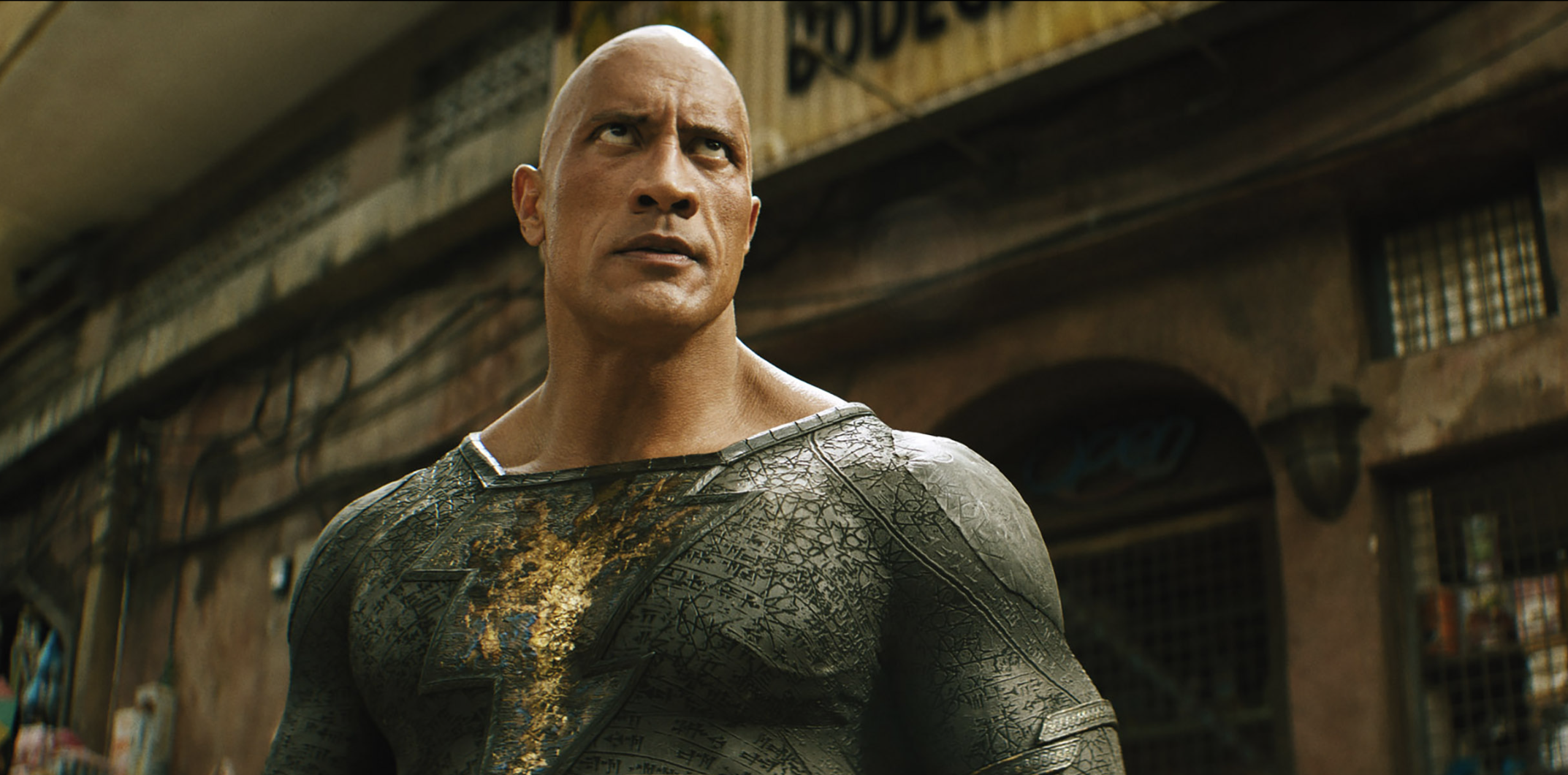You may like superhero movies, you may not. You may think they’re all similar. Maybe they are. One thing is for sure, though: They’re not all the same. Some get to be better (the Black Panther movies) and some have to be worse. Black Adam (2022), unfortunately, falls in the latter category. A spinoff of the reasonably successful and well liked Shazam! (2019), the movie casts aside its predecessor’s charming and lighthearted tone for a darker tonal shift, casting Dwayne “The Rock” Johnson as the titular stone-faced anti-hero. But the film falls short of giving viewers a complex, hate-to-love-him superhero and instead just engages in wanton violence without grappling with any of its implications. And then there’s its flawed engagement with themes of imperialism and exploitation, which it uses to motivate characters and then treats as an afterthought once the plot gets rolling. The movie also spends its time in interesting ways, giving us minute-long slow motion sequences and fifteen-second-long tragic backstories.
If you don’t come to superhero movies for plot, you probably come expecting a spectacle. Unfortunately—despite the abundance of explosions—Black Adam is not so thrilling. The movie, steeped in CGI and slow motion sequences, is visually underwhelming. When it’s not running at one-fourth speed the effects go by too quickly and too easily, as if someone was in Adobe After Effects dragging missiles and capes to and fro, filling the screen but never satisfying the eyes.
I arrived at the theater in time for five minutes of promos, and leisurely took my seat across the aisle and a little way down from a crying baby and its frazzled family. I was one of 10 or so people in the theater. The movie opened with a digitally rendered drone shot of mountains that would have been impressive in 2014. We spent ten minutes being narrated at as the movie exposits the circumstances of Khandaq, the fictional setting of Black Adam. Then, after a summary of the legend of Black Adam, and a prophecy or two, we are brought to the present. Here, we find two somewhat charismatic characters, Bodhi Sabongui’s Amon—our skater boy protagonist straight from the nineties—and Mohammed Amer’s Karim—a bungling but well-intentioned sidekick. Aside from their screen time, the movie is boring enough that it dwindles down to six of us in the theater (including the baby and its entourage) by the end. On the screen, Isis (Sarah Shahi)—a freedom fighter and Amon’s mother—appears with her son Amon. She starts out by pointing to the hypocrisy and ignorance of the Justice Society but seems to give up on her ideals after they are met with hollow responses from the “heroes.” It was disappointing seeing the movie bring up important issues of oppression and exploitation only to cast them aside. After a certain point I started checking the time to see when I could leave. I yawned repeatedly and had to hold in laughter at parts that weren’t jokes. It was a pretty uncomfortable experience.
The movie also introduces but never fleshes out a cast of superheroes from the Justice Society, whose only link to the DC franchise as we know it is the brief appearance of Viola Davis’ stoic Amanda Waller (refreshing as always). Cyclone, despite Quintessa Swindell’s best efforts, is written as another “kidnapped by a mad scientist and given powers” trope, and Noah Centineo’s Atom Smasher is pretty unremarkable. Pierce Brosnan’s gravitas is wasted on his masked character Doctor Fate, and Aldis Hodge’s Hawkman is passionate but spends the whole movie repeating the same lines. These characters might have been appealing had the script given them the chance, but instead they get two to four lines each before they jump into battle, and that’s nearly all they talk about after that. Only Brosnan and Hodge get a consistent back and forth, but it’s not enough to endear either of their characters to the audience.
Unlike other movies without much substance, Black Adam doesn’t even have the humility to cut down on its runtime, meaning that viewers are strapped in for two and a half hours of nonsensical CGI and SFX. Speaking of CGI nonsense, there are zombie skeletons. Yep, zombie skeletons. Wanna guess who summoned them? Oh, just the brooding colleague, as if we couldn’t see that coming. And who defeats these skeletons? Oh, just the (unarmed) civilian population of Khandaq, somehow compelled to risk their lives because a skateboarding kid with a cape told them to. It’s okay, though, the prophecy did say that whoever wears the Crown of Sabbac would raise an army from hell, so it was properly foreshadowed and everything.
The movie does, however, have one reasonably interesting twist, which it executes passably. In fact, if the movie focused more on that twist, and attempted to tackle fewer big topics it was clearly unprepared for, it might have worked. If it had been revealed earlier and developed further, Black Adam would have had some depth (and charisma) to his character, and Johnson might have been able to salvage the role. But that wasn’t what happened. The movie chooses instead to have us spend almost all of the film with an emotionless The Rock, completely blunting his charming personality, leaving us with only his muscles.
The movie seems to think itself dark, yet it does not engage fully with any of the heavy themes it brings up. It seems to set them up and knock them down like dominoes, never quite pursuing their reverberations into the wider world. The movie espouses a simplistic view wherein everyone has the best of intentions, and once people have a few conversations with one another all of the issues go away. The movie assumes that after a flashback or a shouting match, the audience is prepared to accept complete ideological shifts from major characters. It uses this to make a major character completely change their ideology in a deus ex machina that completely breaks immersion. You can only call this movie incredible in the sense that it has no credibility.





